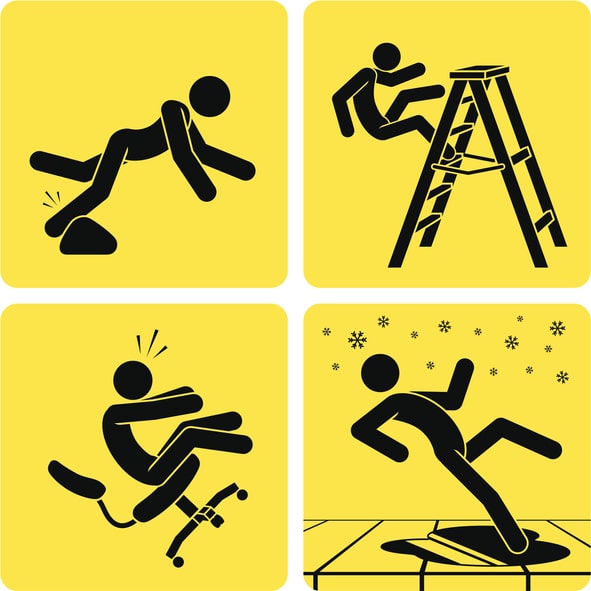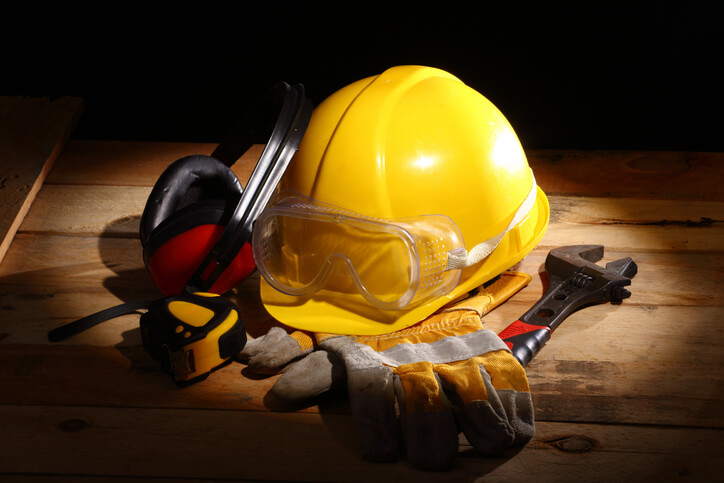30 Construction Safety Statistics for 2024
Understanding the statistics surrounding injuries and fatalities in construction is crucial to foster a safer work environment. Workplace safety is a critical concern for everyone, particularly in industries where the risk of injuries and fatalities is higher. The construction sector is known for its demanding nature and often faces significant challenges in maintaining a safe working environment.
In this article, you will read the latest construction safety statistics, drawing from many reputable sources.
30 Workplace Injuries Statistics to Know
Unfortunately, the construction industry frequently tops the list of dangerous industries due to the higher number of injuries and fatalities. The most frequent cause of fatal injuries at construction is falling, being struck by scaffolding, moving objects, and more. So, let’s have a look at injuries in the workplace statistics;

- According to BLS, the 3.6 severe workplace injury rate in 2021 was recorded as the highest yearly rate since 2016.
- After every 101 minutes in 2021, there was a work-related injury.
- The percentage of African American employees who died while working on the construction sites has increased from 11.4% of total fatalities in 2021. It is considered to be the highest time of all. This group also noticed a 20.7% rise in death from 541 to 653 from the year 2020 to 2021.
- Workers who are involved in material moving occupations and transportation experience the highest rate of fatalities of about 1523 in 2021; this is a significant rise of 18.8% from 2020.
- Suicide rates continued to decline, falling by 8.9 percent to 259 to 236 from 2020 to 2021.
- In 2021, transportation incidents continued to be the most common cause of fatal events, accounting for 1,982 fatal injuries—an 11.5 percent increase from 2020. In 2021, a total of 38.2% of all work-related fatalities fell into this major category.
OSHA INSPECTION ACTIVITY 2017 - 2022In FY 2022, OSHA conducted 31,820 inspections, including 17,739 (about 56 percent) unprogrammed inspections, which includes employee complaints, injuries/fatalities, and referrals.
- The U.S. Bureau of Labor Statistics said today that 2.8 million nonfatal occupational illnesses and injuries were reported by private industry employers in 2022, an increase of 7.5 percent from 2021. This increase is primarily due to an increase in diseases, up 26.1% to 460,700 cases, and injuries, up 4.5% to 2.3 million cases.
- The respiratory sickness cases, which increased by 35.4% to 365,000 cases in 2022, are the main cause of the increase in illnesses. This follows a decline in respiratory infections in 2021 over 2020. The Survey of Occupational Injuries and Illnesses provided these estimates.
- After truck drivers, the construction industry has the second highest rate of workplace fatalities overall.
- One in five worker fatalities in the United States occurs in the construction sector.
- Almost 951 construction workers died on the job in 2021.
- Approximately one percent of construction workers have a fatal injury annually, the highest rate of any industry.
- More than sixty percent of all construction-related fatalities are caused by the “Fatal Four” primary causes of construction deaths: falls, being struck by machinery, becoming entangled between items, and electrocutions.

- In 2021, the construction industry accounted for almost 6.8 percent of all injuries that resulted in lost working days.
- According to different projections, fatal construction accidents cost the US economy $5 billion annually in lost productivity, medical expenses, and diminished family members’ quality of life.
- In 2020, over 130,000 construction employees lost working days due to severe injuries.
- According to BLS, injuries and illness in construction can lead to a 1.7% reduction in employee productivity.
- OSHA penalties may cost $15,625 to $156259 due to safety violations.
- According to OSHA estimation, construction companies almost save $4 to $6, if they spend $1 in safety training programs.
- In 2021, the average expense for an injury involving medical consultation was $42,000, whereas the average expense per fatality was $1.34 million, as per the NSC.
- Construction businesses typically allocate 2.6% of their budget to safety training, but 3.6% of the total budget to injuries.
- Only 31% of construction workers wear personal protective equipment (PPE), despite the fact that 62% of them are exposed to heights.
- With PPE alone, most construction workers are unable to completely reduce their risk of exposure to hazardous substances.
- Just 3.8% of construction workers have personal protective equipment (PPE) that completely mitigates all associated dangers, despite the fact that almost 60% of them must operate near moving parts.
- According to 67% of construction workers, productivity standards are more stringent than safety norms, as per the National Safety Council.
- More than sixty percent of construction mishaps transpire during an employee’s initial year of employment, underscoring the necessity of preemptive, superior training.
- Of the workforce, 25% are concerned about daily injuries and 55% feel that they should receive additional safety training.
- The annual cost of occupational injuries exceeds $170 billion.
- Ages 25 to 34 were found to be the most common for workplace injuries among construction employees.
Why Construction Safety Is Essential In 2023?
As the industry progresses, wearable technology and equipment advancements are contributing to the ongoing evolution of construction safety. Yet, a renewed dedication to safety as well as instruction is vital in 2023 and it is also important to consider the quantity of avoidable accidents and fatalities in the sector every year.

Increasing worker safety demands funding for appropriate training. However, the technique life “three points of contact” aids in lowering the risk of falls, which are the number one cause of fatalities and injuries among construction workers. In the meanwhile, preventing mishaps involving collisions or falling objects requires a thorough grasp of machinery like cranes and aerial lifts. Ultimately, enhanced communication has a quantifiable impact on safety, regardless of the type of communication—hand signals, for example, or a comprehensive safety plan.
However, prioritizing safety helps businesses save money in the long run and is essential in lowering the elevated incidence of accidents in the construction sector.



